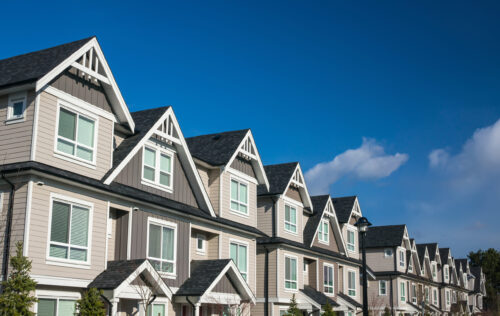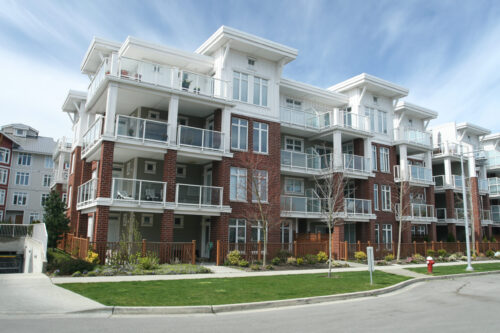
Connect with a Lima One expert today!
If you’d like to know more about this topic or see how it applies to your project, let’s talk.
Keys to Success for Investing in with Class A, B, and C Multifamily Properties
Tips for Successfully Investing in Any Property Class
The commercial real estate industry uses a lot of lingo. This can seem daunting for first-time investors looking to make sense of different property types. One of the ways to distinguish amongst property types, for instance, is by a property’s class rating.
Generally speaking, properties are classified as either Class A, Class B, or Class C. This is true across all commercial real estate asset classes, regardless of whether you’re referring to office buildings, retail centers, multifamily apartment buildings, or industrial and warehouse facilities.
In this article, we look at the distinguishing characteristics of Class A vs. Class B vs. Class C real estate. Any prospective investor should understand the differences between product types prior to investing in a deal. We’ll then look at specific keys to success for investing in any one of these property classes.
Features of Class A Properties
Although there is no universally accepted definition of a Class A (or Class B or Class C) properties, most in the industry consider Class A buildings to:
- Be newer with higher-quality finishes, amenities, and accessibility.
- Be located in the urban core
- Have a bespoke brand or lifestyle associated with them.
- Utilize first-rate maintenance and management
- Be extremely desirable, often “luxury” properties
- Frequently bought and sold by national and international investors
- Attract top-tier tenants who are willing to pay higher rents
The desirability of Class A buildings means that they provide more liquidity than Class B or Class C properties. In other words, there is enough consistent interest in Class A properties that an investor can expect to have an easier time selling the property than they would selling a Class B or Class C property in the same market.
For all these reasons, Class A properties are considered one of the safest additions to an investor’s portfolio. Conversely, they offer some of the lowest returns as the trade-off for this lower risk profile.
Features of Class B Properties
A Class B real estate property is, as you would expect, one tier below Class A. Features of Class B properties often include:
- More utilitarian-style spaces and architecture
- Fewer amenities than a Class A building.
- Average interior finishes, systems, and floor plans.
- Systems that are in adequate condition
- Properties that are structurally sound but not overwhelmingly impressive.
- Average maintenance and management teams
- A broad range of mid-level tenants who aren’t willing to pay higher rents
- Occasionally attract attention among national investors, but most investors tend to be local to the marketplace.
While Class B properties tend to be considered a “riskier” investment than Class A properties, there are still several benefits to adding a Class B building to your portfolio. Namely, well-located Class B properties can generally be purchased at a lower price and can stabilized over time. As building improvements are made and leases turn over, the new owner can increase rents and improve the tenant mix. With thoughtful stabilization and/or value-add strategies, an investor can realize greater returns through Class B properties than they might be able to achieve by investing in Class A buildings in the same market.
Features of Class C Properties
Class C buildings can be highly lucrative for those with a solid investment strategy, but these properties are certainly not without their risk. In fact, Class C properties are considered the riskiest of the three property classes featured here today.
Risks of investing in class C multifamily properties can include:
- These buildings are generally older (20+ years) and in need of significant renovation
- Many will show visible signs of deterioration, such as overgrown landscaping or crumbling building facades.
- These properties, because they are older, will usually include few, if any, on-site amenities.
- Tend to be located in less desirable locations
- Attract low-income renters or those with poor credit and rental history
Class C properties, however, offer the potential for the highest cash flow out of these three property classes. This cash flow is hard earned, as these buildings are often management intensive. Still, a well-run Class C multifamily property can offer workforce housing/affordable housing solutions and be valuable both for investors and for the communities where they are located.
Primary Indicators of Multifamily Property Class
There are several factors that affect a property’s classification, including location, the age of a building, property condition, amenities, and occupancy. Note that these factors are generalizations, and there are exceptions to each of the “rules” below.
Location
A property’s location is one of the biggest driving factors of its classification. Class A properties tend to be the most well located. These properties will typically be located in areas with lower crime rates and have easy access to major employers, hospitals, universities, good schools, arts, and cultural amenities including retail and restaurants. Class B and Class C properties are generally in less desirable neighborhoods. If these properties are in a desirable location, they may be a building that leaves much to be desired because of age, condition, or lack of amenities.
Age of Building
Class A buildings tend to be newer (often, new construction), whereas Class B and Class C properties are usually older. Class C properties will usually be 20-30+ years old.
An exception to this rule happens when an older building such as a historic property is gut-renovated to include high-end finishes and other amenities akin to their newly constructed peers.
Property Condition
A property’s condition is one of the leading factors of its class. A property that has been fully renovated and upgraded with high-end finishes is more likely to achieve Class A status than a multifamily property that is old, weathered, and in need of both cosmetic and structural repairs. As a result of property condition, Class A and B properties tend to need less maintenance than Class C buildings.
Amenities
Class A properties will usually offer robust amenities. In the multifamily realm, this could mean an on-site fitness center, media room, concierge, underground or otherwise covered parking, outdoor pool, doggy daycare, and more. Class B and Class C properties usually have fewer, if any, amenities to offer residents.
Occupancy
Class A properties tend to attract the most qualified, high-earning professionals as tenants. Class A buildings appeal to the masses, and therefore usually have very low vacancy and top-of-market rents.
Class B and C properties usually have less desirable tenants (typically, people who earn less) and may have more variable occupancy levels
Keys to Success When Investing in Any Property Class
Many investors struggle to determine which multifamily property class is best for them to invest in. There is no right or wrong answer—each property class has its own pros and cons.
Class A Keys to Success
Class A properties are the most sought after, which means they command the highest price. Any investor looking to purchase Class A property will want to ensure they are not overpaying for the property.
- Pay close attention to net operating income.
- Analyze variable factors such as how far rents can be pushed and on what timeline.
- If a property already commands the highest rents in the marketplace, there may not be room to grow for some time, which needs to be factored into the underwriting.
Another key to success when investing in Class A real estate is to factor in any costs associated with keeping the property in first-class condition. This means refreshing amenities and common areas on a timeline basis (every 3-5 years) and integrating new building technology (e.g. smart thermostats) among other things.
Class B Keys to Success
Before investing in Class B property, consider what is driving the property’s classification. Is it location? Age? These are variables you can never change. Compare these to features such as property condition, amenities, and occupancy – these can all be improved upon with the right expertise, resources, and time.
Successful Class B investors will look for properties that have a strong foundation, such as being located in a great area, but that otherwise need improvements to maximize the return on investment. These become value-add opportunities where bridge financing - like Lima One Capital’s multifamily loans - is a perfect fit.
Class C Keys to Success
Class C multifamily investment properties are considered the riskiest, but they can offer the greatest returns. The keys to success when investing in a Class C property are:
- Thoroughly screen tenants and keep strong cash reserves on hand. Investors will want to be sure they aren’t over-levered when buying the property, and then keep plenty of cushion in the bank in the event of cash flow disruptions.
- Look for Class C properties that appear to be on the upswing. Look for opportunity zones or other areas where communities are trying to increase workforce housing options
- Consider the various value-add strategies that may be deployed to improve the building, its amenities, rents and occupancy.
- It’s always important to evaluate the cost (time and money) needed to deploy specific value-add strategies. Determine what’s realistic and what’s pie-in-the-sky before investing, and make sure your numbers operate with realistic rent rolls numbers.
Multifamily Investment Strategies
Remember that there’s no right or wrong commercial real estate investment strategy. It can be equally as lucrative to invest in a Class A property as it is a Class B property—there are just different processes to follow and different paths to success. Choose your path based on your individual risk tolerance, investment horizon, portfolio diversity, and access to capital. And of course, remember that Lima One Capital funds Class A, B, and C multifamily properties not just in major cities but in the top 250 MSAs. If you have a project in view, contact us today to find out how you can close quickly and close with certainty with Lima One Capital.
Subscribe for More Insights
Get the latest industry news & Lima One updates.








